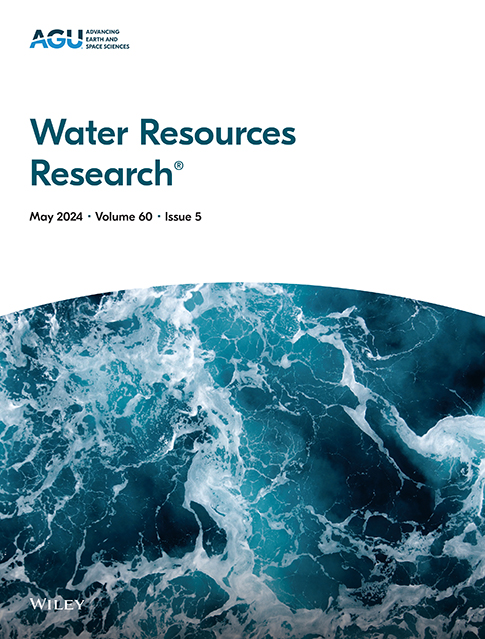A Stochastic Simulation Method for Estimating Vegetation Interception Capacity Based on Mechanical-Geometric Analysis
IF 4.6
1区 地球科学
Q2 ENVIRONMENTAL SCIENCES
引用次数: 0
Abstract
Vegetation interception is a vital ecohydrological process, and the interception capacity is a key parameter to many classical interception models. However, current canopy interception capacity estimation methods largely depend on measured interception data, which are high cost and insufficient portability. This study addresses vegetation interception capacity at both leaf and canopy scales. At the leaf scale, a stochastic simulation method that do not depend on measured interception data and can take into account wind loads is developed, incorporating geometric properties and mechanical analysis to estimate water storage per unit leaf area. At the canopy scale, leaf water storage is summed up by using canopy structure parameters including leaf area index, leaf inclination angle distribution, and stem area index obtained by high-precision LiDAR point cloud data. The water storage capacities of 27 different leaf types were measured using the water spray method, and canopy interception from 22 rainfall events were monitored using comprehensive equipment. The proposed approach was successfully validated at both the leaf and canopy scales. In addition, a reasonable parameterization scheme for the model is discussed in detail to facilitate further application.基于机械几何分析的植被截留能力随机模拟方法
植被截流是一个重要的生态水文过程,截流能力是许多经典截流模型的关键参数。然而,目前的冠层拦截容量估算方法在很大程度上依赖于实测拦截数据,成本高且可移植性不足。本文研究了植被在叶片和冠层尺度上的拦截能力。在叶片尺度上,提出了一种不依赖于实测截流数据并考虑风荷载的随机模拟方法,结合几何特性和力学分析来估计单位叶面积的储水量。在冠层尺度上,利用高精度激光雷达点云数据获取的叶面积指数、叶片倾角分布、茎面积指数等冠层结构参数对叶片储水量进行总结。采用喷水法测定了27种不同叶型的蓄水能力,利用综合设备监测了22个降雨事件的冠层截留量。该方法在叶片和冠层尺度上都得到了成功的验证。此外,还详细讨论了模型的合理参数化方案,便于进一步应用。
本文章由计算机程序翻译,如有差异,请以英文原文为准。
求助全文
约1分钟内获得全文
求助全文
来源期刊

Water Resources Research
环境科学-湖沼学
CiteScore
8.80
自引率
13.00%
发文量
599
审稿时长
3.5 months
期刊介绍:
Water Resources Research (WRR) is an interdisciplinary journal that focuses on hydrology and water resources. It publishes original research in the natural and social sciences of water. It emphasizes the role of water in the Earth system, including physical, chemical, biological, and ecological processes in water resources research and management, including social, policy, and public health implications. It encompasses observational, experimental, theoretical, analytical, numerical, and data-driven approaches that advance the science of water and its management. Submissions are evaluated for their novelty, accuracy, significance, and broader implications of the findings.
 求助内容:
求助内容: 应助结果提醒方式:
应助结果提醒方式:


